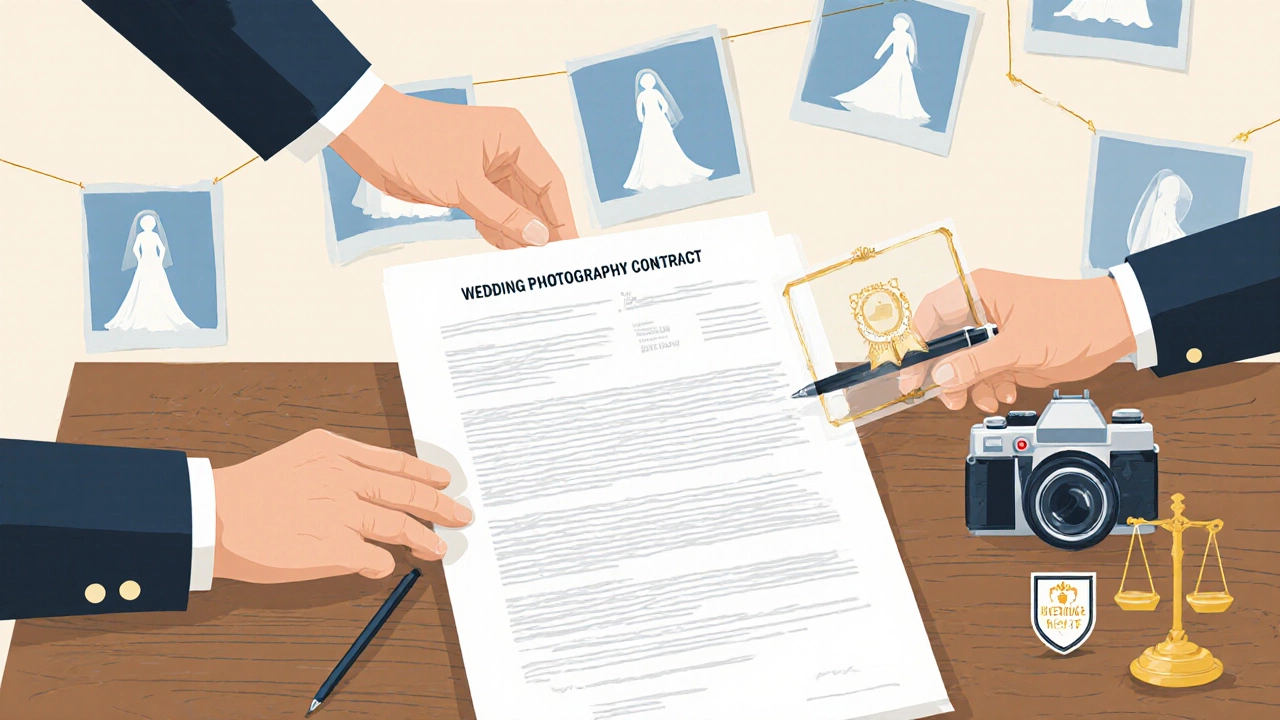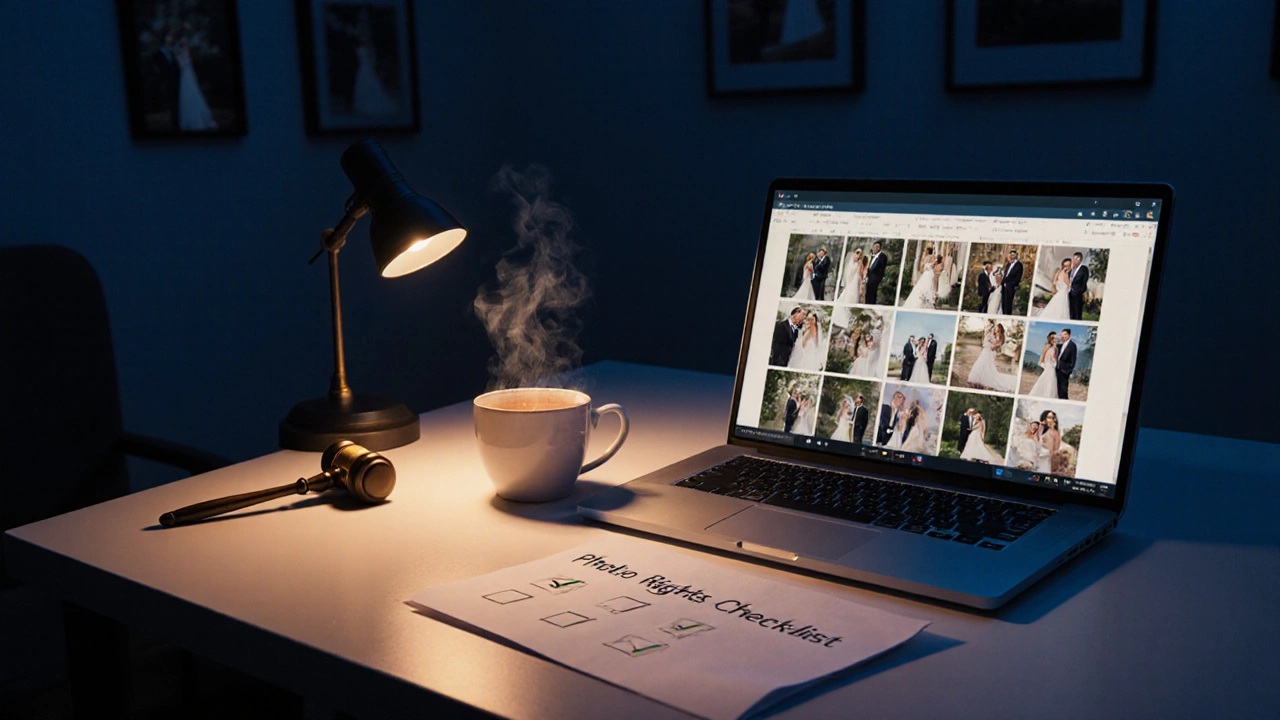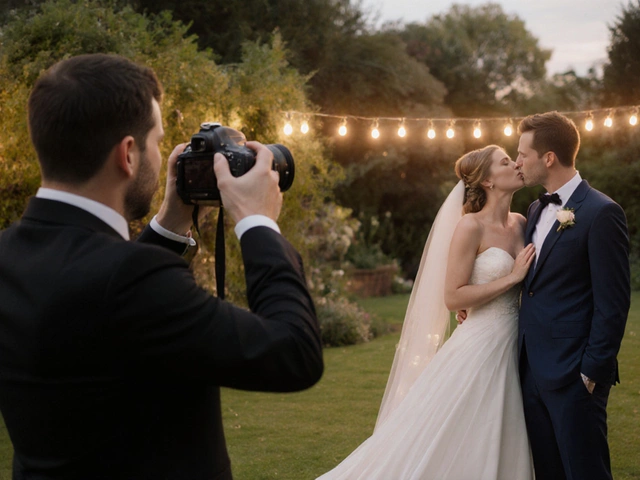
When you hand over your wedding day to a wedding photographer is a professional who captures the ceremony, reception, and everything in between, it’s natural to wonder who actually owns the images that result.
Key Takeaways
- In the UK, the photographer automatically holds copyright unless the contract says otherwise.
- Clients can obtain usage rights through a licence or a full transfer of ownership if agreed in writing.
- Model releases and usage clauses protect both the couple and the photographer.
- Clear contracts prevent costly disputes after the wedding.
- Follow a simple checklist to secure the rights you need.
Legal Basics of Photo Copyright in the UK
The Copyright Act 1988 gives the creator of an original photograph the exclusive right to reproduce, distribute, and display the work.
This means that, by default, your wedding photo ownership belongs to the photographer the moment the shutter clicks. The law does not automatically pass those rights to the client, even though the images were taken at a personal event.
However, copyright can be transferred or licensed, but only through a written agreement. Oral promises are rarely enforceable because they’re hard to prove in court.
Typical Photographer Contracts and What They Cover
Most UK photographers provide a standard contract that outlines three core areas:
- Photographer contract - the legal document you both sign.
- Usage rights - what you can do with the photos (e.g., share on social media, print for personal use).
- Model release - a clause that lets the photographer use the images for their own marketing.
Pay close attention to the “licence” section. Photographers often grant a “personal use licence” which lets you print, post on private social media profiles, and create photo albums. Anything beyond that-commercial use, advertising, or selling prints-requires a separate commercial licence.

How to Negotiate the Rights You Need
If you want more control over your wedding photos, here’s a practical approach:
- Ask for a full transfer of copyright. This is rare and usually comes with a higher fee because the photographer loses the ability to reuse the images.
- Request an expanded licence. Specify the platforms (e.g., Instagram, family website) and the number of prints you expect.
- Clarify the model release. You can ask the photographer to exclude commercial exploitation of your images, or to grant you a co‑ownership of the release.
- Set a time limit. Some contracts allow a licence that expires after a certain number of years, after which the photographer regains full control.
Whatever you negotiate, get it in writing. A signed amendment to the original contract is the safest way to protect both parties.
Ownership vs. Licence: A Quick Comparison
| Aspect | Full Ownership (Transfer) | Personal Use Licence |
|---|---|---|
| Right to reproduce | Unlimited - you can print, sell, or remix | Limited - personal prints, private sharing only |
| Right to commercialise | Yes, you can use images for business purposes | No, requires extra commercial licence |
| Photographer’s marketing use | Usually waived in the transfer | Allowed unless a model release clause is added |
| Cost impact | Higher fee - photographer loses future revenue | Standard package price |

What to Do If a Dispute Arises
Disagreements over image rights can happen, especially when one side assumes they have more freedom than the contract permits. Here’s a step‑by‑step plan:
- Locate the signed contract and any amendments.
- Identify the specific clause that’s being contested (e.g., “personal use licence”).
- Contact the photographer calmly and reference the wording.
- If needed, involve a neutral third party-often a professional mediation service for creative disputes.
- As a last resort, seek legal advice. A solicitor familiar with intellectual property can interpret the contract in light of the Copyright Act.
Having a well‑drafted contract from the start reduces the likelihood of reaching step four.
Checklist for Couples: Securing Your Photo Rights
- Read the full photographer contract before signing.
- Confirm whether copyright stays with the photographer or is transferred.
- Ask for a written licence that lists exactly how you can use the images.
- Request a model release clause that protects your privacy or commercial interests.
- Keep a digital copy of the signed agreement in a safe place.
- Plan ahead: if you want prints for your parents or a wedding website, note it in the licence.
Frequently Asked Questions
Do I automatically own the photos after paying the photographer?
No. In the UK the photographer holds copyright unless the contract explicitly transfers ownership or grants a broader licence.
Can I share wedding photos on Instagram?
A personal use licence normally allows private social media sharing. If the contract labels Instagram as commercial, you’ll need permission.
What is a model release and why does it matter?
A model release is a clause that lets the photographer use your images for advertising or portfolio purposes. You can ask for it to be omitted or limited.
Is it cheaper to keep the photographer’s copyright?
Usually, yes. Full transfers cost more because the photographer loses future income from the images.
What can I do if the photographer uses my photos commercially without consent?
First, check the contract for the model‑release clause. Then contact the photographer to request removal or payment. If they refuse, consult an intellectual‑property solicitor.


Comments
Post Comment